Are you considering an academic department transfer? It can be a daunting process, but with the right approach, it can lead to exciting new opportunities tailored to your interests and goals. In this article, we'll guide you through crafting a compelling letter that clearly articulates your reasons for the transfer and highlights your aspirations. Ready to take the next step in your academic journey? Let's dive in!

Clear and concise subject line
Academic department transfer requests require precise communication to ensure clarity. The subject line should explicitly state the intention, such as "Request for Transfer from [Current Department Name] to [Desired Department Name]". This succinctly indicates the purpose of the email, facilitating quick understanding by the recipient. Including relevant details, such as your student ID or program name, can further assist in identifying the request. Clear, informative subject lines are crucial in academic correspondence to streamline administrative processes.
Personal details and current program information
Students seeking an academic department transfer often need to provide essential personal details such as full name, student identification number (ID), and date of birth. Current program information typically includes the name of the current degree program--such as Bachelor of Science in Biology--along with the program's start date, anticipated graduation date, and current GPA (Grade Point Average). Additional relevant details may involve the names of key faculty members or advisors associated with the current program, as well as any completed coursework that aligns with the desired transfer program--such as advanced courses in chemistry or mathematics. Providing this information ensures clarity and assists in the evaluation of the transfer request.
Reason for transfer request
A transfer request for an academic department often stems from various motivations, such as seeking a more aligned curriculum or enhanced career prospects. Students might desire to switch from the Sociology Department, which focuses on social behavior and structures, to the Psychology Department, emphasizing cognitive processes and mental health. This shift may be driven by a deeper interest in human behavior studies, aiming for a career in clinical psychology or counseling. Additionally, personal experiences or internships could highlight the need for more specialized education in behavior analysis or therapeutic techniques. Increasing the likelihood of securing positions in high-demand fields reinforces this desire for change in academic focus. Each student's unique journey shapes their decision to pursue a transfer, underscoring the importance of aligning educational paths with long-term professional aspirations.
Alignment with new department goals
An academic department transfer request requires a clear articulation of alignment with new department goals. The objective lies in illustrating how one's academic ambitions, research interests, and career aspirations complement the strategic vision of the intended department. For instance, if transitioning from a general business department to a specialized marketing department at a university, details such as the growing emphasis on digital marketing strategies in the new curriculum can be highlighted. Furthermore, specific faculty members, cutting-edge projects, or innovative initiatives pertinent to the new department can be mentioned to reinforce the compatibility. This alignment can be further detailed with personal motivations such as previous coursework in consumer behavior, internships related to branding, or case studies that echo the new department's focus, ensuring a precise connection is established between personal goals and departmental objectives.
Respectful closing and contact information
Transferring between academic departments can have a significant impact on a student's educational trajectory. The process often involves detailed evaluations of academic records, program compatibility, and personal goals. Students may seek assistance from academic advisors, department heads, and registrars to facilitate this transition. Schedule a meeting to discuss interests within the prospective department, ensuring clarity on prerequisites and course availability. Completing necessary forms and providing a compelling rationale for the transfer can enhance the request. Timeliness is crucial, as departments usually have specific deadlines for transfer applications each semester.

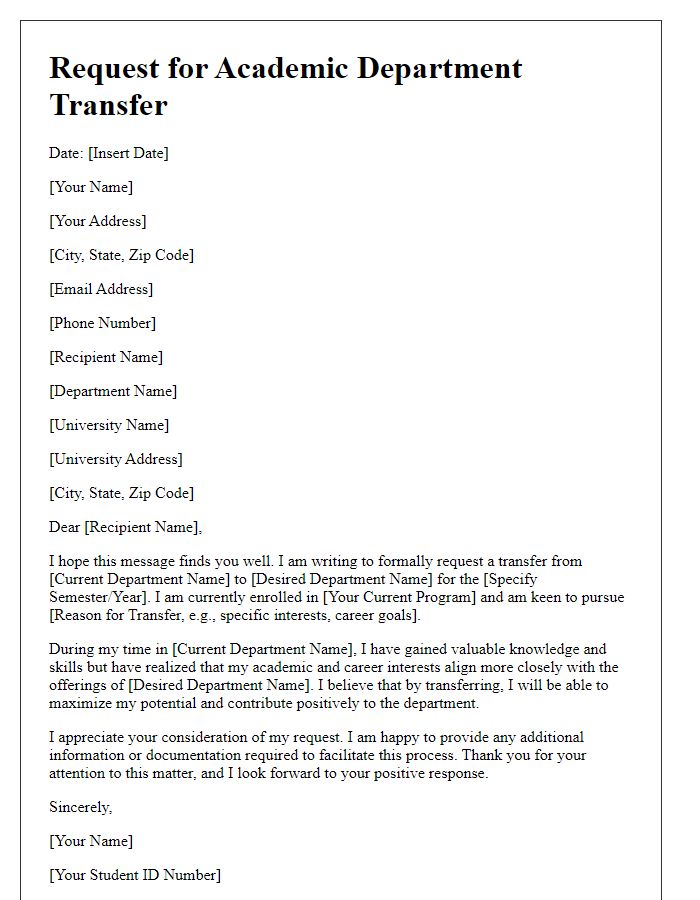

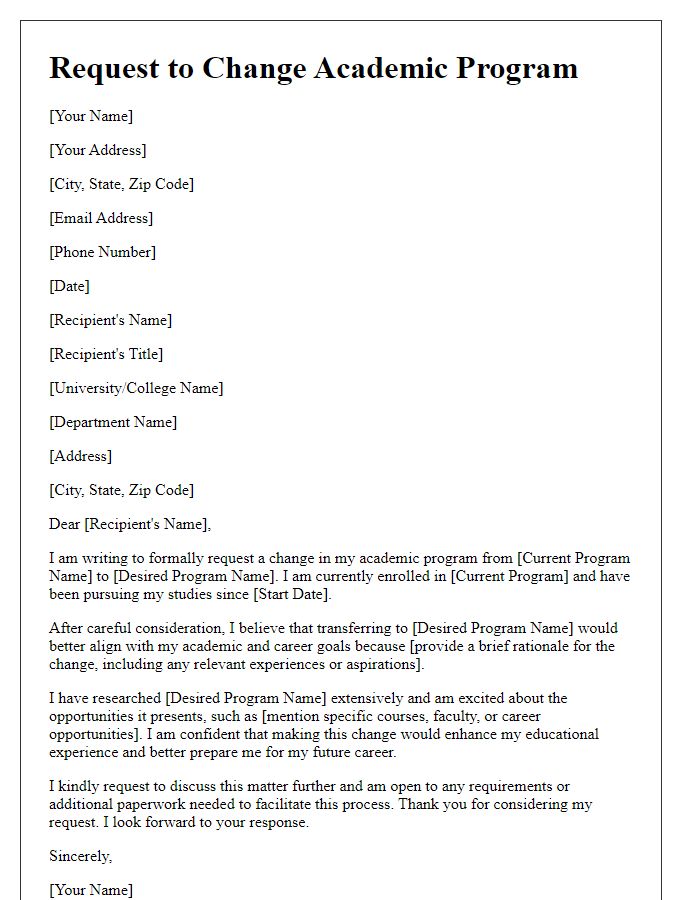
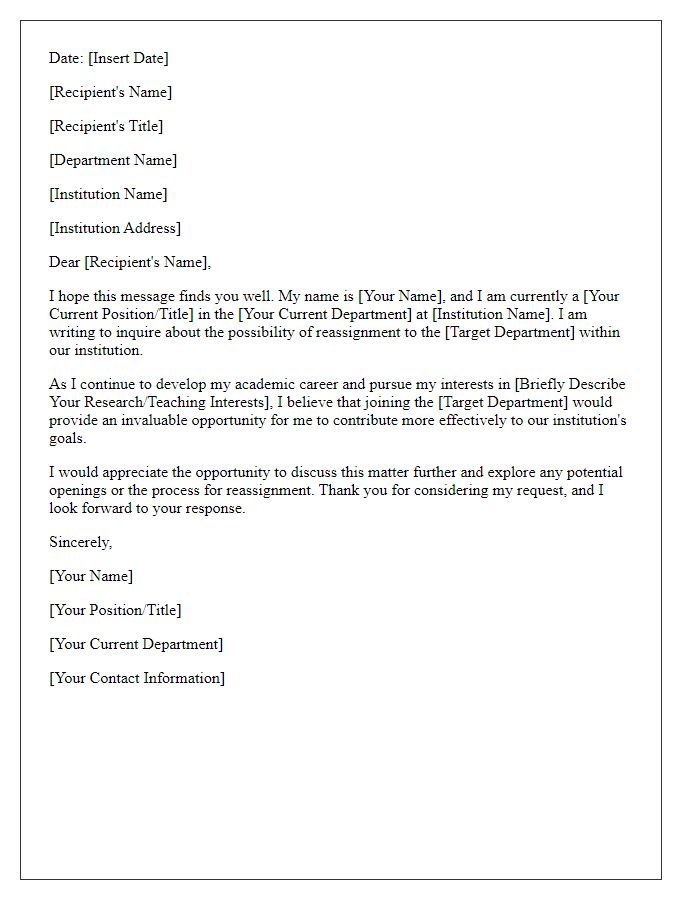
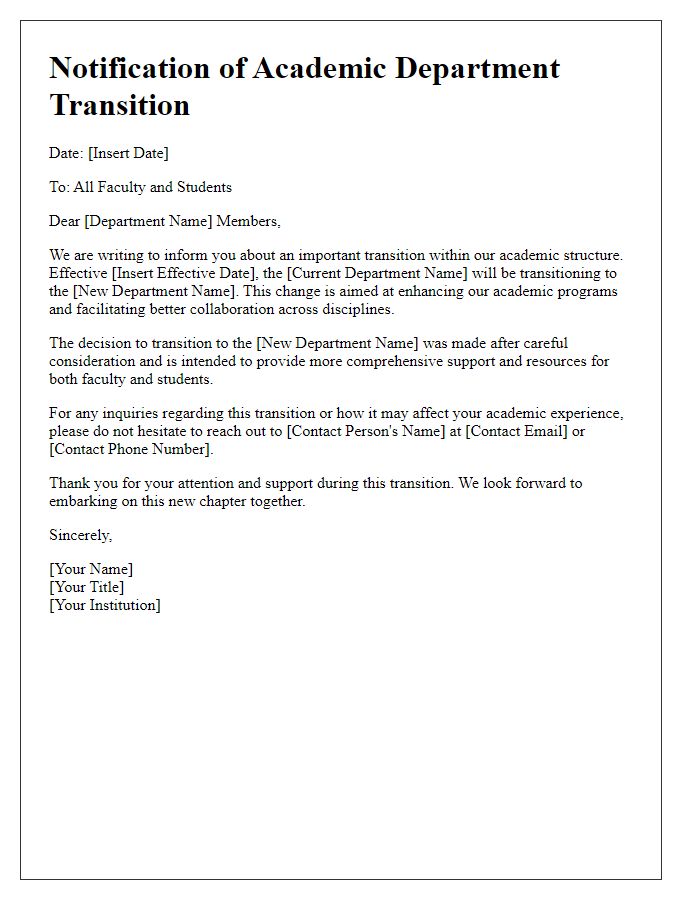
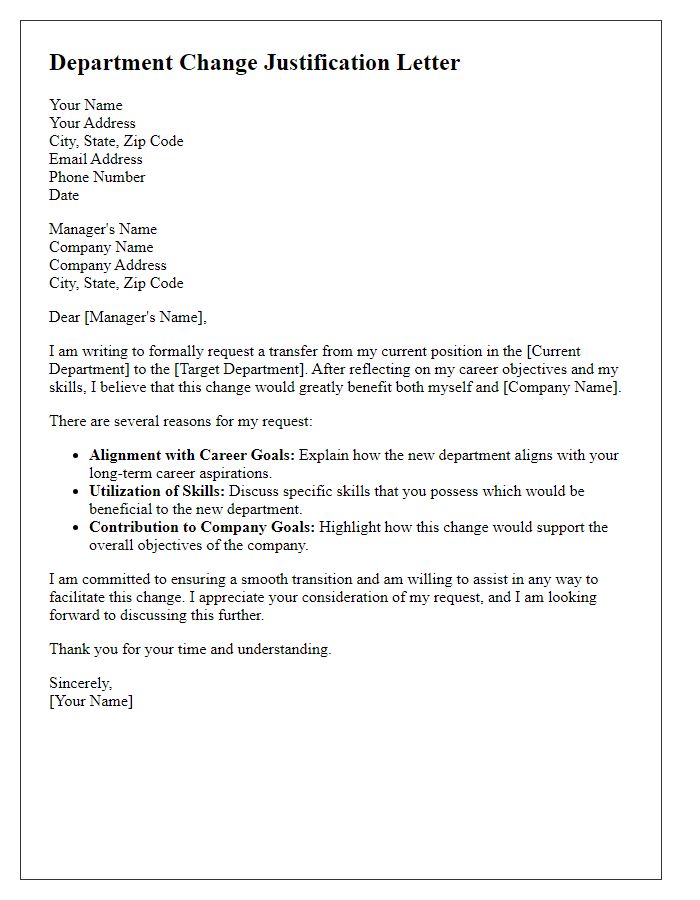
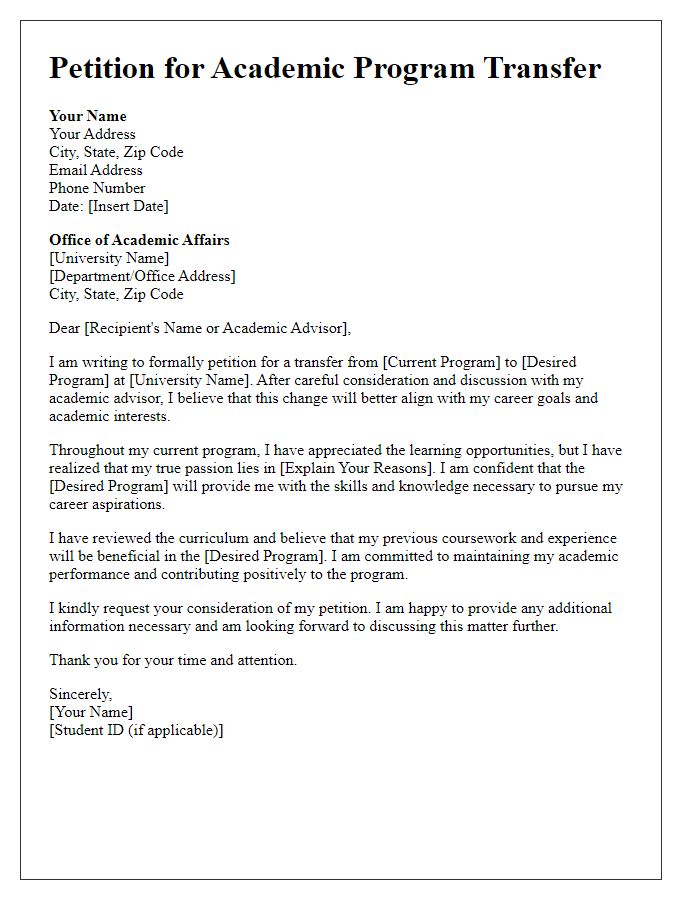
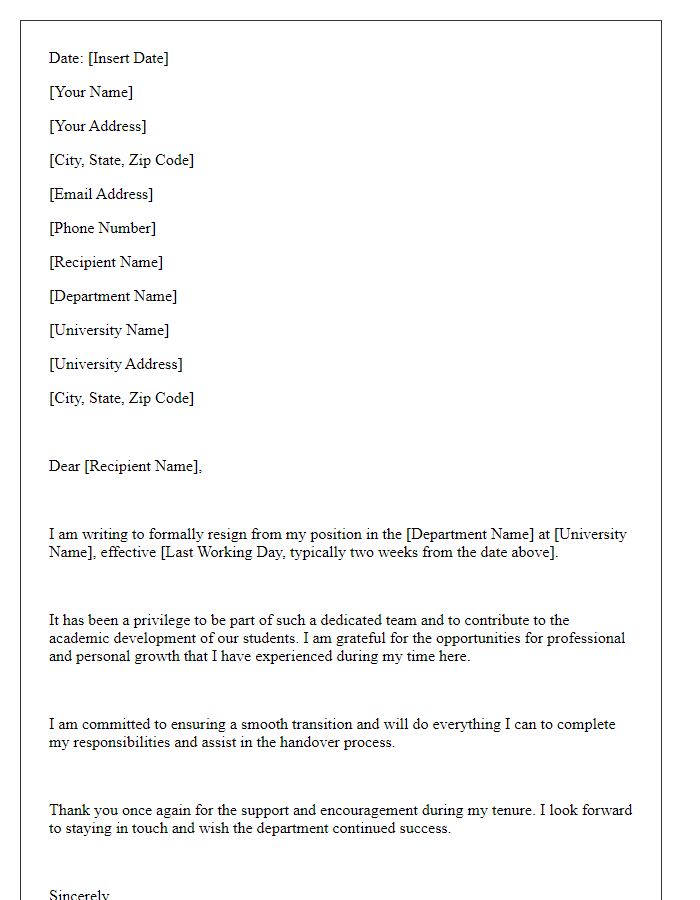
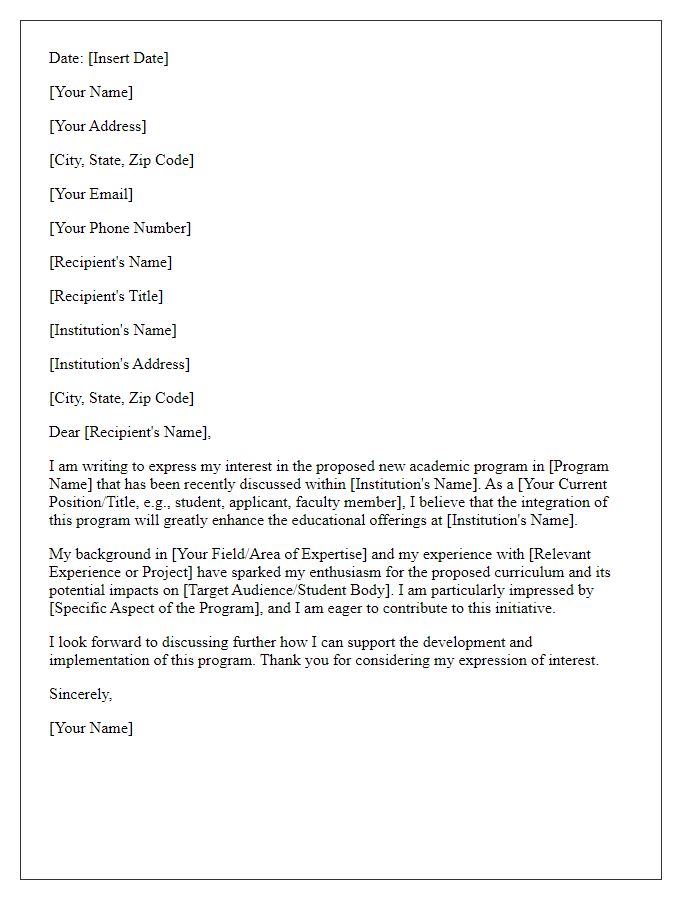
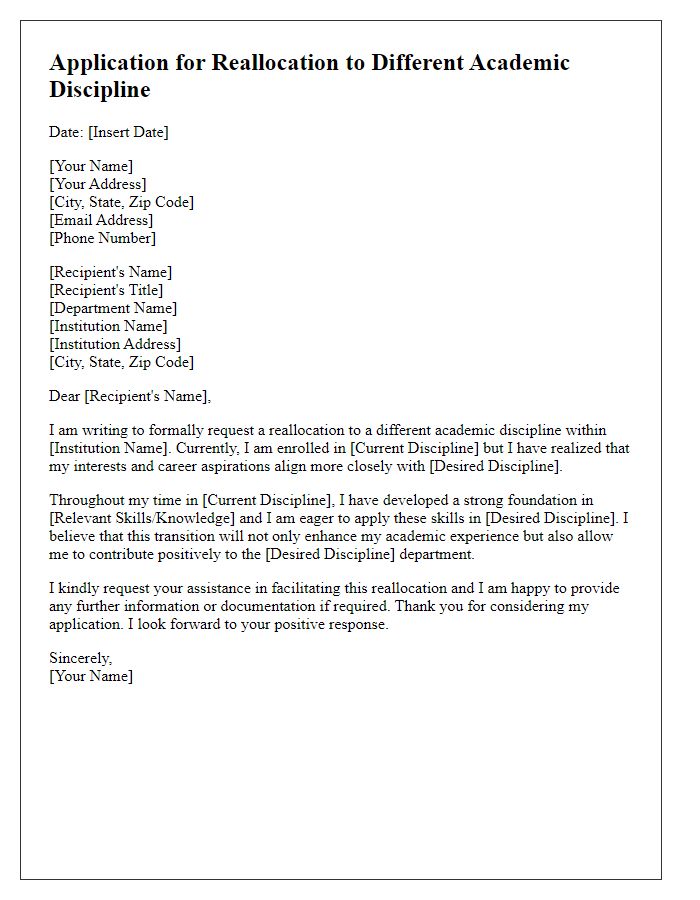





Comments